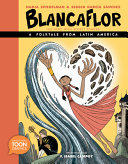2018 School Spending Survey Report
Blancaflor, The Hero with Secret Powers: A Folktale from Latin America
Sept. 2021.
56p.
Tr $16.95. ISBN 9781943145553; pap. $9.99. ISBN 9781943145560.
COPY ISBN
VERDICT This version of the classic story is a lovely confluence of European and North American culture that celebrates the strength and wit of a young girl whose abilities have been overlooked or underestimated.
RELATED
ALREADY A SUBSCRIBER? LOG IN
We are currently offering this content for free. Sign up now to activate your personal profile, where you can save articles for future viewing






Be the first reader to comment.
Comment Policy:
Comment should not be empty !!!